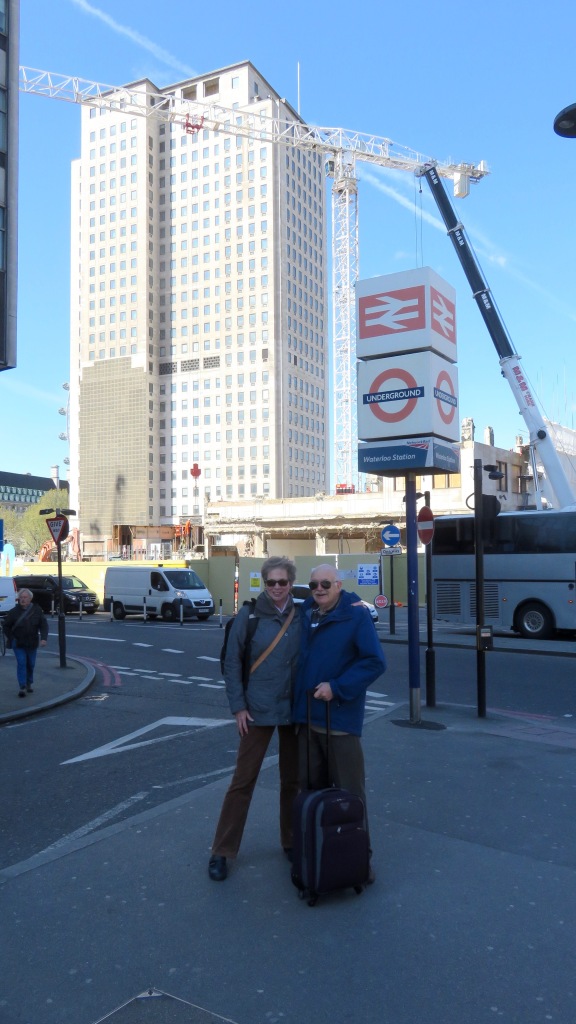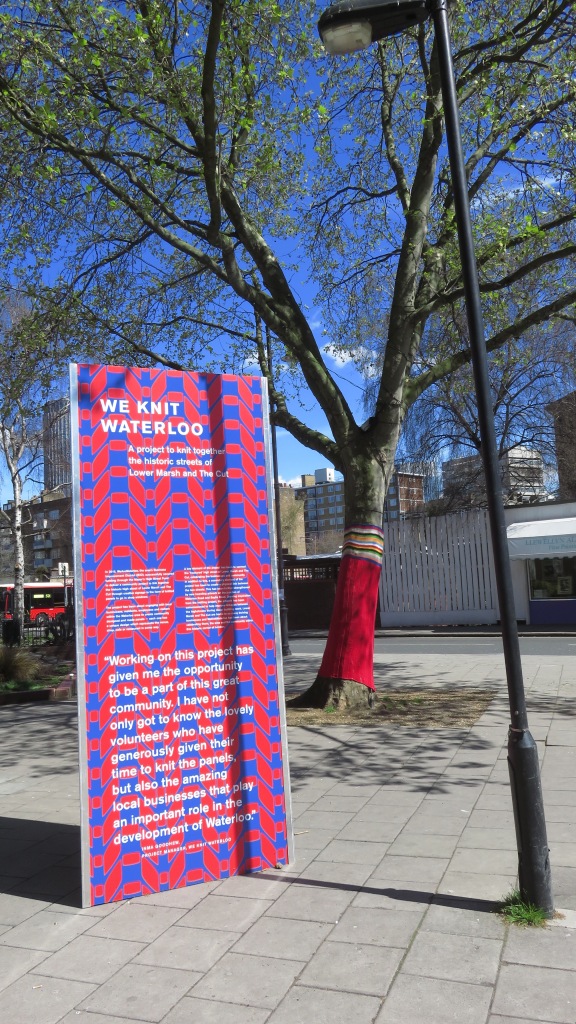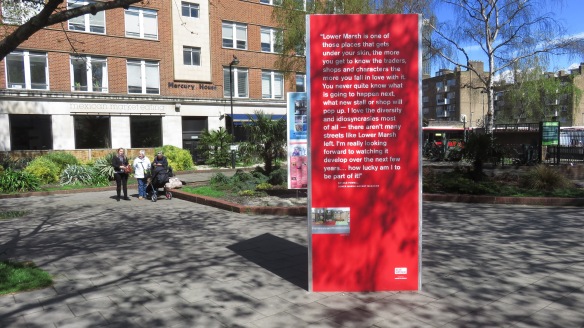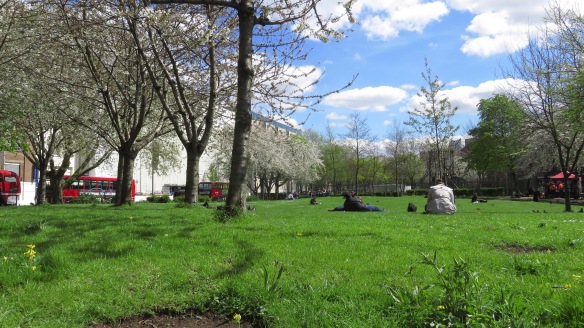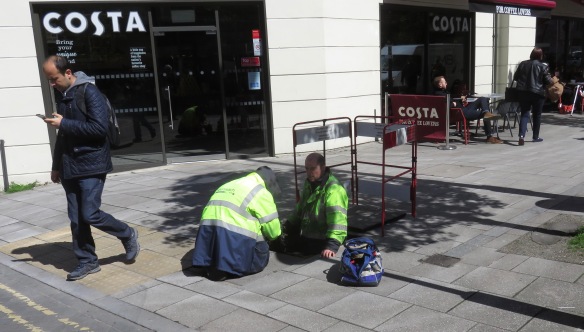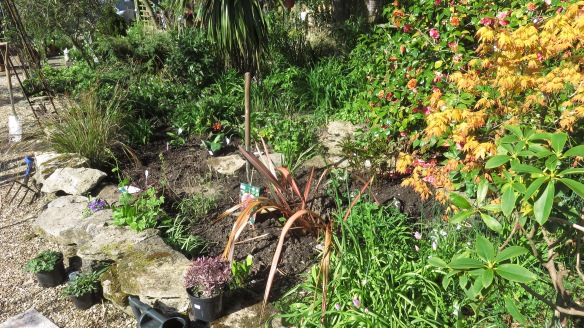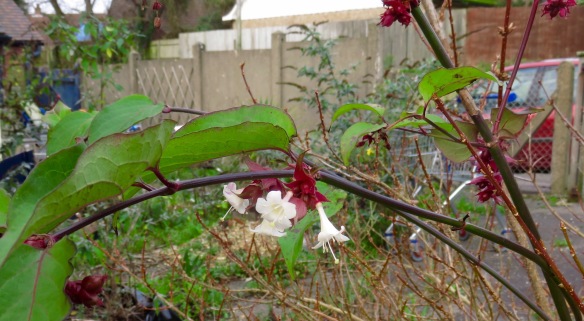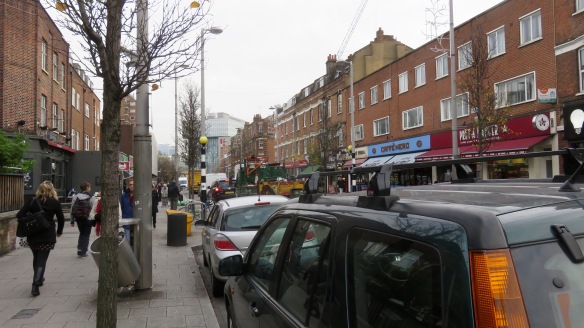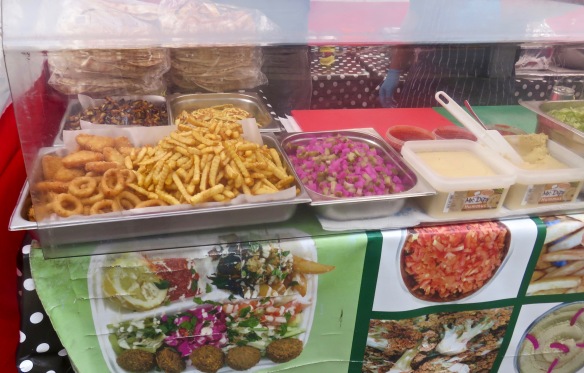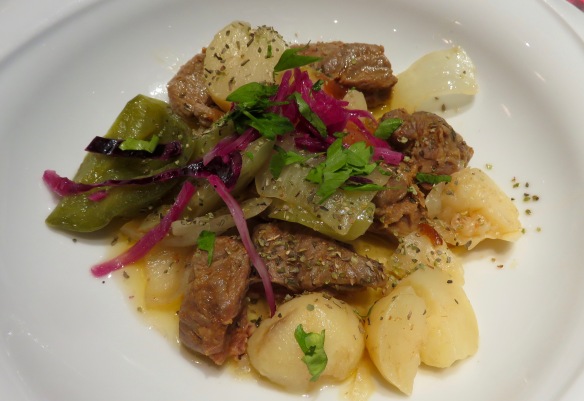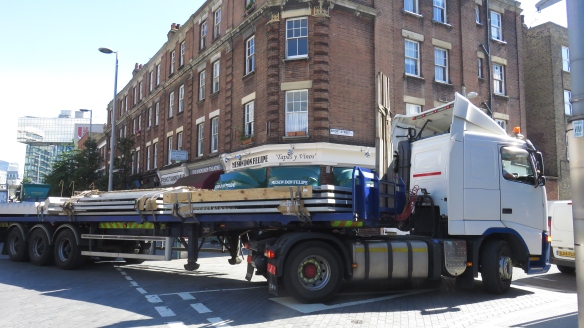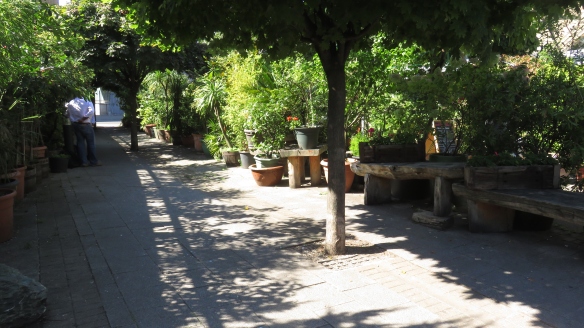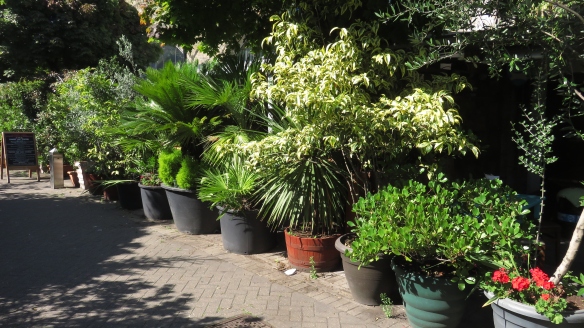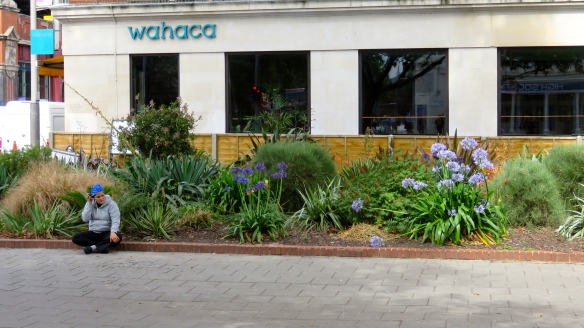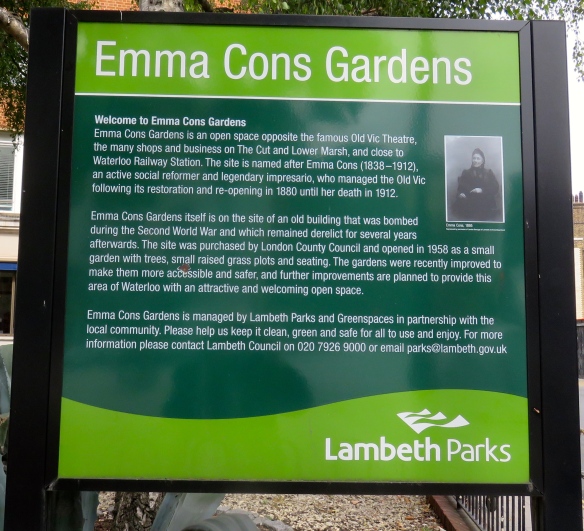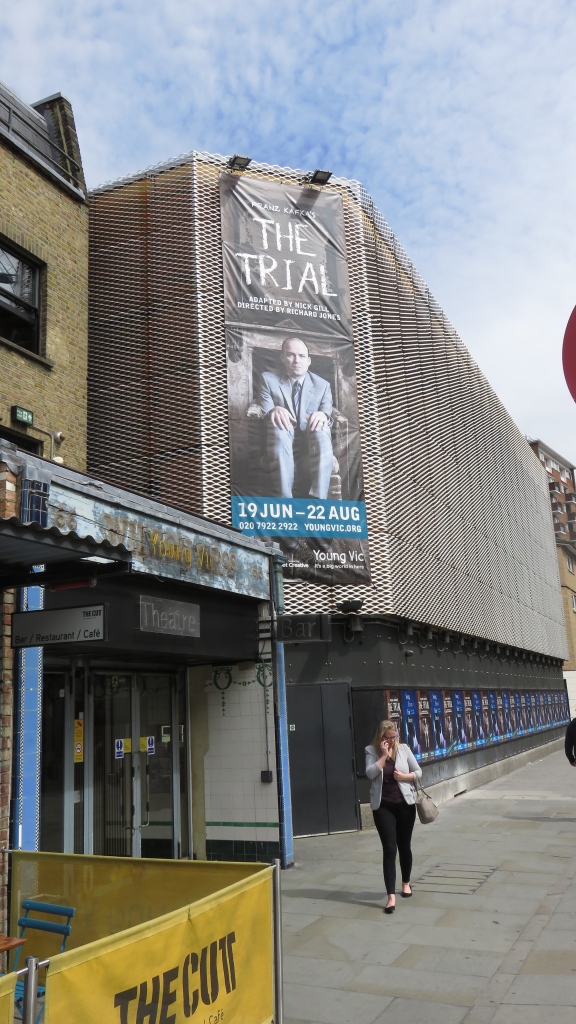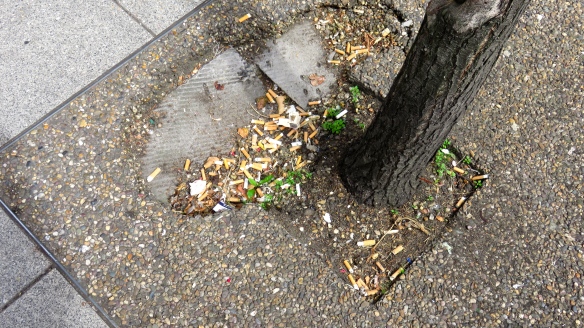CLICKING ON THE IMAGES, TWICE IF REQUIRED, WILL ENLARGE THEM.
Jackie drove me to New Milton this morning, for me to catch the train to Waterloo and lunch with Norman at Tas.
The platform planter’s pansies sparkled with a sprinkling of early rain on this bright, sunny, day.
The train was packed, with many people standing. I homed in on the one seat unoccupied by a person. It bore a back-pack with a collection of papers on the table in front of it. I asked the man next to it if there was anyone sitting there. ‘No’, he said, got to his feet, removed the offending items, and placed them in the rack above. I ask you.
On leaving the main entrance of Waterloo Station I stood contemplating the remaining tower that is the sole survivor of the Shell complex being replaced by residential apartments, when I felt a gentle pressure on my shoulder and turned to see Shelly and Ron, on their way home from a night in London.
Watching a City Tour bus approach the circular IMAX cinema, I wondered how long such a ride would take.
The construction alongside the Old Fire Station is rising faster than the new Shell complex. Anyone caring to enlarge the image of the passing scaffolders’ lorry will be treated to a certain dubious witticism. In Emma Cons Gardens, opposite the Old Vic theatre, it appeared that the plane trees were being afforded protection against the recent unseasonal frosts. They bore arboreal versions of Hampshire horses’ rugs.
Closer inspection revealed that their decoration is the inaugural part of a project designed to knit together some of our capital’s shopping streets., in this case Lower Marsh and The Cut.
Across the road in Lower Marsh, once described to me as ‘A Beautiful Setting’ Waterloo Millennium Green was beginning to attract basking visitors.
In The Cut itself, I enjoyed an entertaining conversation with a couple of burrowing BT engineers, who were intrigued to learn of our frequent contact with their country colleagues.
Norman and I enjoyed an excellent meal at Tas. My choice was slices of sirloin steak cooked in a tomato and almond sauce, followed by a delicately flavoured cold rice pudding. We shared a bottle of the house red wine.
I travelled to Brockenhurst on my return from Waterloo. Jackie met me there and drove Godfrey Smith, who I had met on the train, to his Sway destination on our way home.
As I thought she would, Jackie had almost completed the planting of the Palm Bed.
Why is it that writers of book blurbs and their jacket designers will often describe them as hilariously funny at the expense of any other quality they may have? So it is with those of Bill Bryson, which is probably why I have not read one before ‘The Road To Little Dribbling’ that I finished today.
The book is humorous of course, but it is also a fond bitter-sweet ramble through the author’s adopted land. I haven’t read ‘Notes From a Small Island’, but the Daily Telegraph’s description of that would fit this sequel much more appropriately than those that follow. Our friend Barrie Haynes passed this one on to me because he thought my writing similar. I take that as a compliment.
After my lunch, a slice of pizza was ample sustenance this evening.

